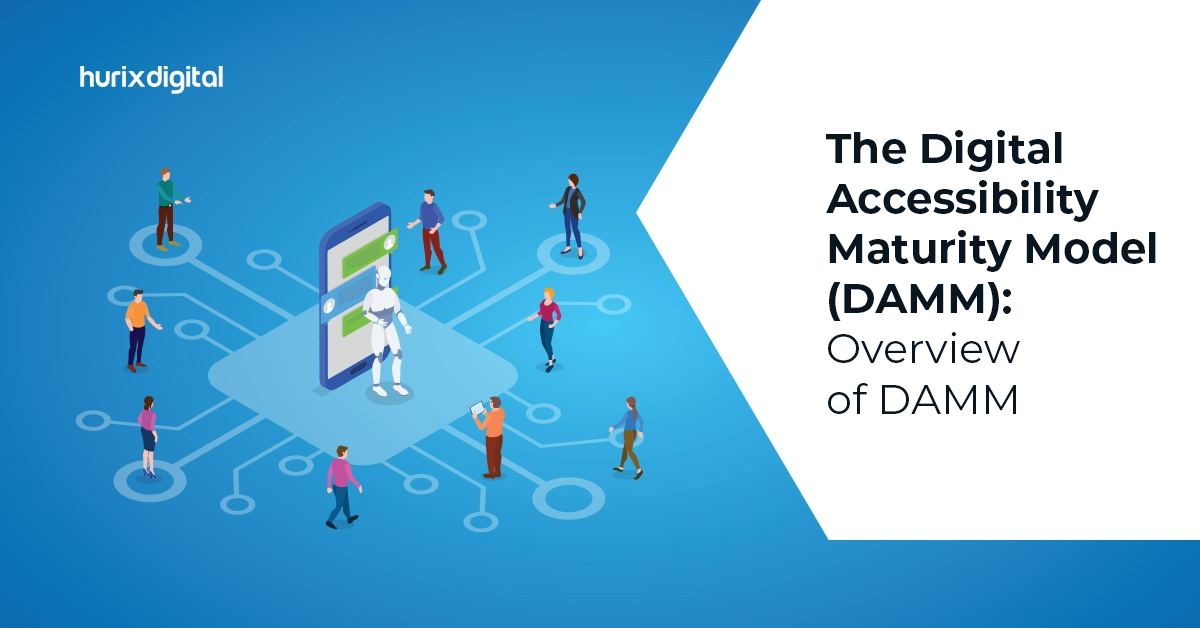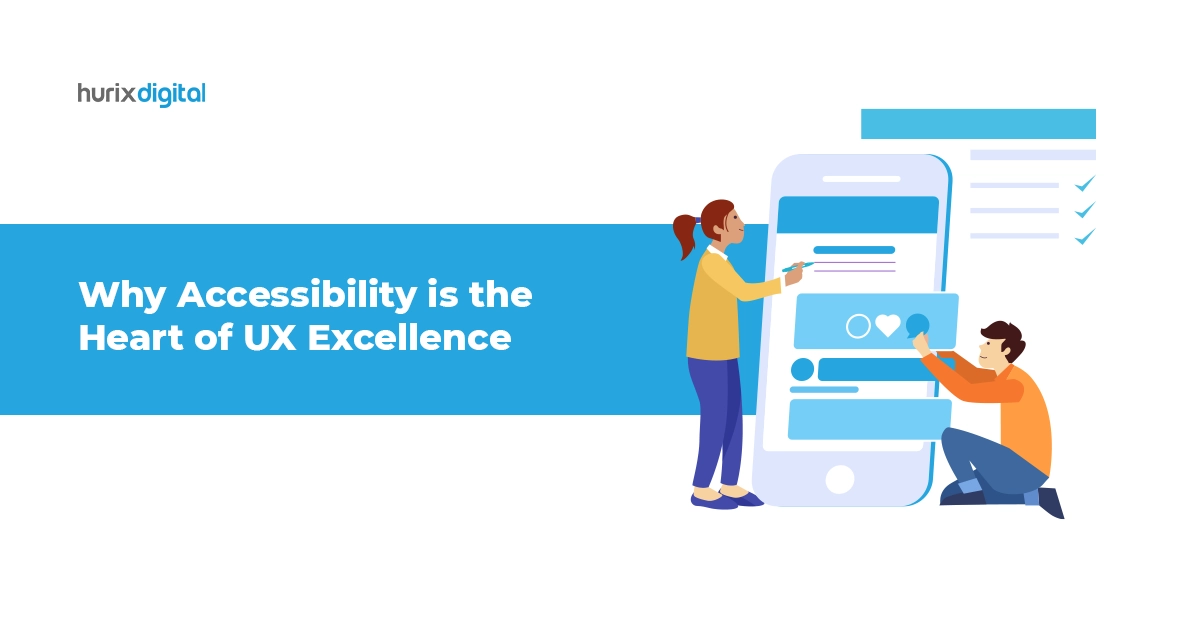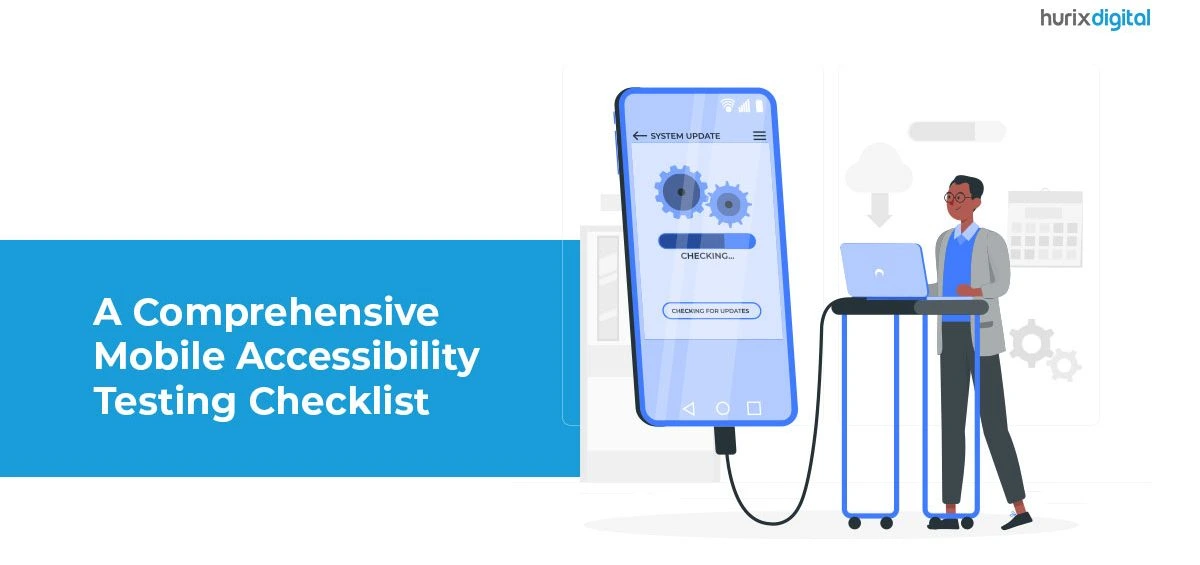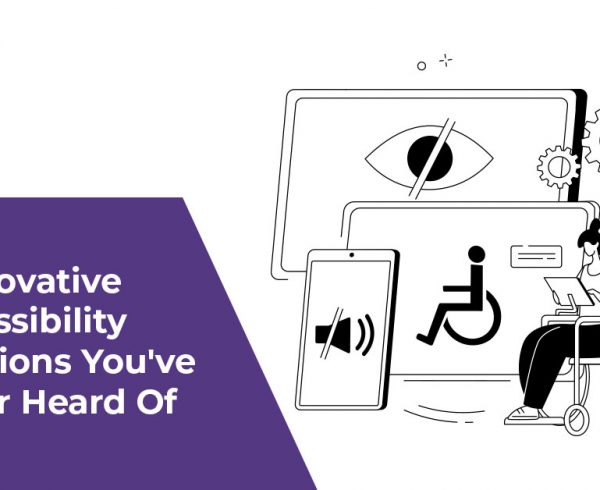Summary
The article emphasizes the importance of digital accessibility for the 1.3 billion people globally facing significant disabilities. It introduces the Digital Accessibility Maturity Model (DAMM), a framework helping organizations enhance inclusivity through various dimensions and maturity stages.
Around 1 in 6 people globally, totaling about 1.3 billion individuals, face significant disabilities, making them the world’s largest minority. These individuals collectively hold substantial spending power in the billions. Therefore, it has become crucial for businesses to create digital experiences that are inclusive for everyone. This not only aligns with social responsibility but is also a smart business move.
However, prioritizing digital accessibility is not just about following rules. It is a strategic decision that opens up new markets and strengthens connections with a broader audience. In today’s blog, we’ll explore the Digital Accessibility Maturity Model (DAMM) – a tool that plays a crucial role in helping businesses navigate the path to digital inclusivity. We’ll further shed light on the basic structure, stages, and key components of DAMM.
Table of Contents:
- Introduction to the Digital Accessibility Maturity Model (DAMM)
- Key Components of the Digital Accessibility Maturity Model
- Structure of the Accessibility Maturity Model
- Accessibility Maturity Model Stages and Their Significance
- Accessibility Maturity Modelling Vs. Conformance Testing
- The Bottom Line: How is DAMM Shaping the Digital Accessibility Landscape?
Introduction to the Digital Accessibility Maturity Model (DAMM)
The Digital Accessibility Maturity Model (DAMM) is a framework designed to assess and improve the level of digital accessibility within an organization. Digital accessibility refers to the inclusive design practice of ensuring that digital content, services, and technologies are usable by individuals with disabilities. The goal is to make Information and Communications Technology (ICT) accessible to everyone, regardless of their abilities or disabilities.
It’s worth noting that while the DAMM is intended to be independent of specific technical accessibility standards, it is likely influenced by or aligns with the principles and recommendations set forth by standards such as Web Content Accessibility Guidelines (WCAG). These standards serve as benchmarks and best practices for creating accessible digital content and experiences.
Organizations adopting a DAMM framework can ensure that their maturity levels are in line with widely accepted and recognized principles of digital accessibility, as established by organizations like the World Wide Web Consortium. This alignment helps in achieving the goal of creating a more inclusive digital environment for all business organizations irrespective of their fields and sizes.
Key Components of the Digital Accessibility Maturity Model
The DAMM typically consists of different levels, proof points, or stages, each representing a certain level of maturity in terms of accessibility implementation. These levels often range from basic or initial to advanced or optimized stages. The model helps organizations evaluate their current state of digital accessibility and provides a roadmap for progressing to higher maturity levels.
The key components of a Digital Accessibility Maturity Model may include:
1. Policy and Governance: Assessing the existence and effectiveness of policies and governance structures related to digital accessibility within the organization.
2. Awareness and Training: Evaluating the level of awareness and training provided to employees to ensure they understand and implement accessibility best practices.
3. Design and Development Processes: Examining the incorporation of accessibility considerations into the design and development processes of digital products and services.
4. Testing and Evaluation: Assessing the methods and tools used to test and evaluate the accessibility of digital content and applications.
5. User Support and Documentation: Examining the provision of support and documentation for users with disabilities to help them effectively use digital products and services.
6. Continuous Improvement: Assessing the organization’s commitment to ongoing improvement in web accessibility and incorporating feedback from users with disabilities.
Organizations can use the DAMM as a guide to identify areas for improvement, set goals, and implement strategies to promote digital inclusivity.
Also Read: Empowering Digital Accessibility: A European Perspective on Website Inclusiveness
Structure of the Accessibility Maturity Model
The Accessibility Maturity Model is structured around seven crucial dimensions within an organization, aiming to enhance conformity with accessibility standards and regulations.
1. Dimensions of the Digital Accessibility Model
Following are the seven dimensions that collectively form a comprehensive framework for assessing and enhancing organizational accessibility maturity:
1. Communications
2. Knowledge and Skills
3. Support
4. ICT (Information and Communication Technology) Development Life Cycle
5. Personnel
6. Procurement
7. Culture
2. Key Components of the Dimensions:
Each dimension is distinctly labeled with a straightforward, high-level summary describing its coverage. Within each dimension, there are two key components:
1. Proof Points: Proof Points are tangible evidence highlighting progress within the dimension. Each proof point is accompanied by a succinct, high-level description, providing clear indications of advancements.
2. Maturity Stages: These are different levels of accessibility maturity within the dimension. The four maturity stages (inactive, launch, integrate, and optimize) outline the requisites for achieving full maturity in that specific dimension.
This organized framework allows organizations to comprehensively assess and enhance their accessibility maturity across various dimensions by providing both tangible evidence of progress and a roadmap to reach optimal accessibility maturity levels.
Accessibility Maturity Model Stages and Their Significance
Here is what each of the maturity model stages signifies:
1. Inactive
Absence of any accessibility initiatives related to communications.
2. Launch
- Acknowledgment of the need for accessibility in both internal and external communications.
- Implementation of plans to make all communications accessible and comply with web accessibility guidelines.
3. Integrate
- Laying out a communications roadmap and ongoing integration of accessibility criteria.
- Delivery of accessible communications across all major platforms with the inclusion of a formalized process for addressing accessibility complaints.
4. Optimize
- Full implementation of accessibility processes and tools across all internal and external media.
- Establishment of consistent processes, procedures, and tools, regularly reviewed and refined to ensure complete accessibility compliance.
Accessibility Maturity Modelling Vs. Conformance Testing
The terms Accessibility Maturity Modelling and Accessibility Conformance Testing are often used interchangeably. However, they are different from each other based on their scope, time frame, and results. Here’s a comparison of the Accessibility Maturity Modeling and Accessibility Conformance Testing:
1. Purpose
- Maturity Modeling: Offers insights into an organization’s capacity to consistently develop accessible products over an extended period.
- Conformance Testing: Provides information about the level of accessibility conformance of a specific product.
2. Scope
- Maturity Modeling: Holistic assessment of an organization’s accessibility initiatives.
- Conformance Testing: Targets a particular version of a product or a subcomponent of a product.
3. Results
- Maturity Modeling: Offers a comprehensive picture of where the organization excels in accessibility and identifies areas for improvement to remove barriers.
- Conformance Testing: Offers insights into the accessibility conformance of a product at a specific point in time.
4. Time Frame
- Maturity Modeling: Evaluates accessibility initiatives and practices over an extended period.
- Conformance Testing: Focuses on a snapshot of the product’s accessibility conformance in a particular version.
Also Read: Top 5 Reasons for Digital Accessibility Compliance in Europe
The Bottom Line: How is DAMM Shaping the Digital Accessibility Landscape?
As of 2024, the Digital Accessibility Maturity Model holds a central and influential position in the digital world. Its alignment with widely accepted accessibility standards, including WAI-ARIA and WCAG, solidifies its standing as a gold standard in digital accessibility. Furthermore, its adaptability and relevance make it a go-to resource for organizations seeking to create inclusive digital experiences. As a result, it remains a powerful tool helping organizations to stay at the forefront of accessibility best practices.
Hurix Digital offers a path to digital inclusivity with its Accessibility Testing Solutions. Our accessibility solutions include comprehensive accessibility audits, 508 Compliance Testing, PDF Testing, and much more to ensure your digital assets align seamlessly with global standards.
Contact us today to learn more!











